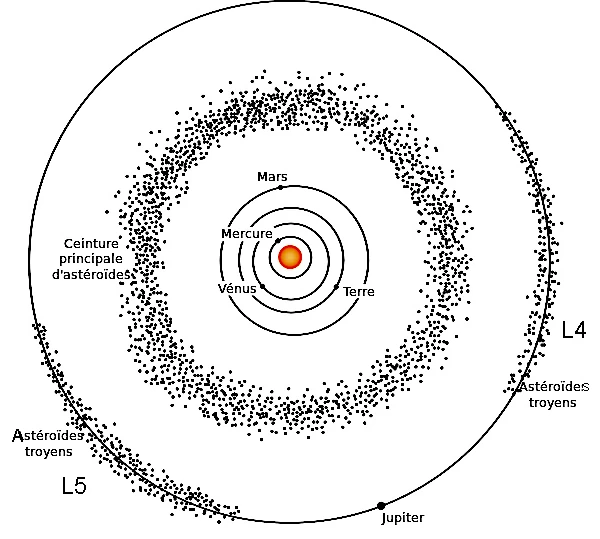
Natural satellites, commonly called moons, orbit planets. An intriguing scientific question arises: Can a satellite itself have a natural satellite, which could be called a "secondary moon"?
A secondary moon is a natural satellite that orbits another natural satellite, which itself orbits a planet. The stability of such an orbit is extremely limited by several factors:
- The dominant gravity of the primary planet, which tends to disrupt the trajectories of small satellites.
- The tidal forces exerted on the secondary satellite by the primary planet, which can cause its disintegration or ejection.
- The Hill sphere of the primary satellite, defining the region around the satellite where its gravity dominates over that of the planet, severely limits the maximum distance for a stable secondary moon.
Currently, no secondary moon has been observed in our solar system, but numerical simulations suggest they could exist around very massive satellites like Ganymede or Titan, provided they remain close to the parent satellite.
For such a system to be stable, several conditions must be met:
According to George Darwin (1845-1912), tidal effects limit the maximum size and orbital distance of any secondary satellite. The Hill sphere defines the volume around a satellite in which its gravity dominates over that of the planet.
So far, no secondary moon has been observed in our solar system.
| Primary Satellite | Mass | Max Distance for Secondary Satellite | Comment |
|---|---|---|---|
| Ganymede | 1.48 × 1023 kg | ~500 km | Numerical simulation indicates possible stable orbit close to the satellite |
| Titan | 1.35 × 1023 kg | ~400 km | Saturn's gravity strongly limits outer orbits |
| Callisto | 1.08 × 1023 kg | ~300 km | Inner orbits possible but not detected |
Source: Icarus, Hill sphere and stability analysis of moonlets.
Unlike the large moons of the giant planets, many asteroids have their own natural satellites. These systems, called binary or multiple asteroid systems, are relatively common in the main belt and among near-Earth asteroids.
However, these asteroids do not have "secondary moons" in the strict sense. The main reason is related to the very small gravitational scale:
Thus, although asteroids can have moons, the formation of secondary moons around these satellites is practically impossible. This contrast illustrates the importance of mass and central gravity in the stability of multi-level systems.
Although planetary moons and asteroid satellites are all natural satellites, they have fundamental differences related to their size, gravity, and orbital environment.
The main distinctions are as follows:
This comparison illustrates how gravity and orbital environment control the complexity of natural satellite systems and explains why hierarchical systems with "moons of moons" are extremely rare in the solar system.
| Main Asteroid | Satellite | Average Distance | Comment |
|---|---|---|---|
| 243 Ida | Dactyl | ~90 km | First asteroid satellite discovered by the Galileo mission |
| 87 Sylvia | Romulus | ~1350 km | Triple system with Remus, stable in the main belt |
| 87 Sylvia | Remus | ~710 km | Second satellite of the same system |
| 22 Kalliope | Linjia | ~1100 km | Example of a binary system with a circular orbit |
| 90 Antiope | Antiope B | ~170 km | Binary system nearly identical in mass |
| 130 Elektra | P4 | ~500 km | Triple system with very close satellites |
| 107 Camilla | S/2001 (107) 1 | ~1200 km | Discovered by recent telescopic observations |
| 3749 Balam | S/2002 (3749) 1 | ~70 km | Example of a near-Earth asteroid with a satellite |
Source: Icarus, Asteroid Satellites: Observations and Dynamics and Minor Planet Center.